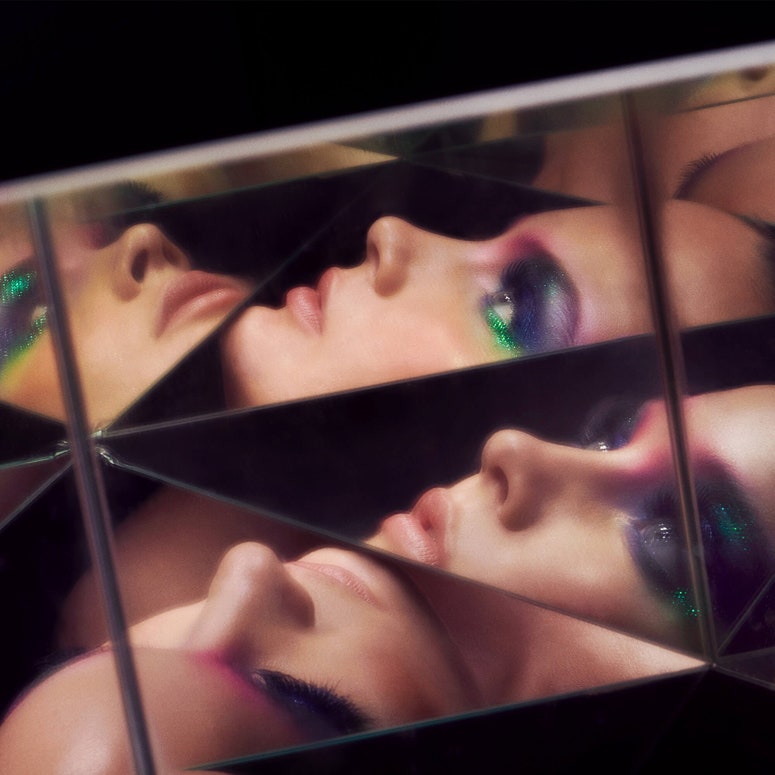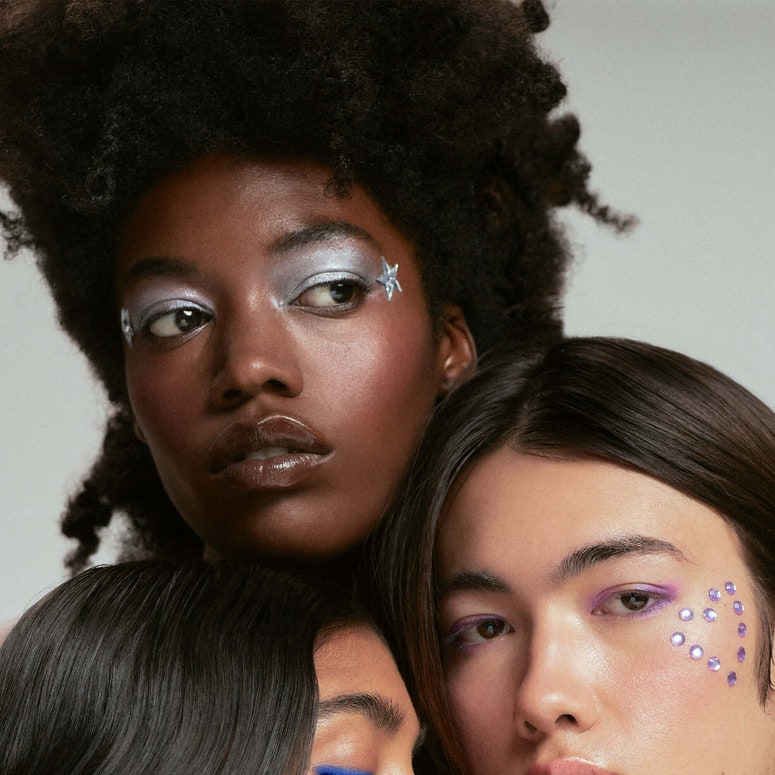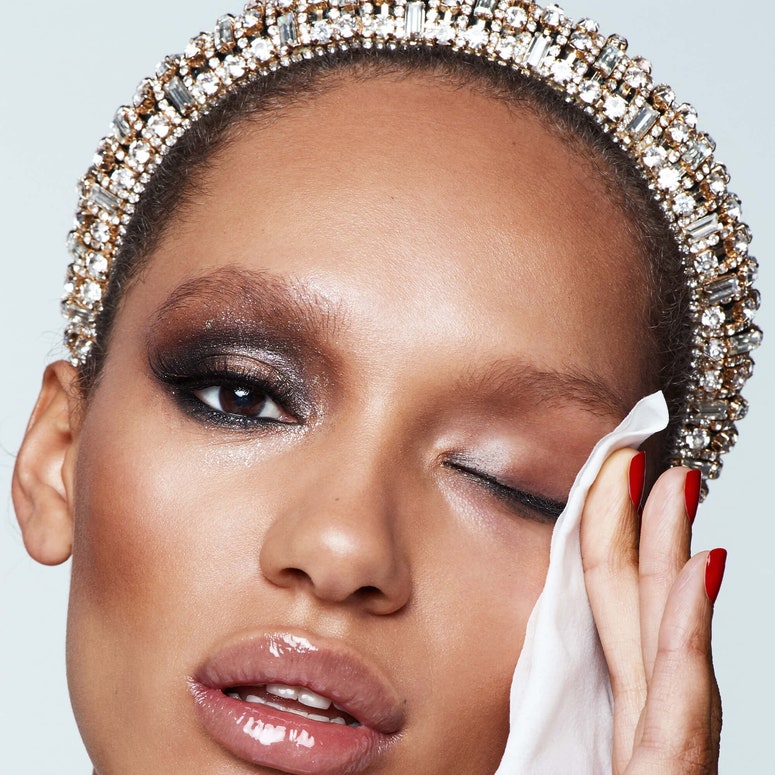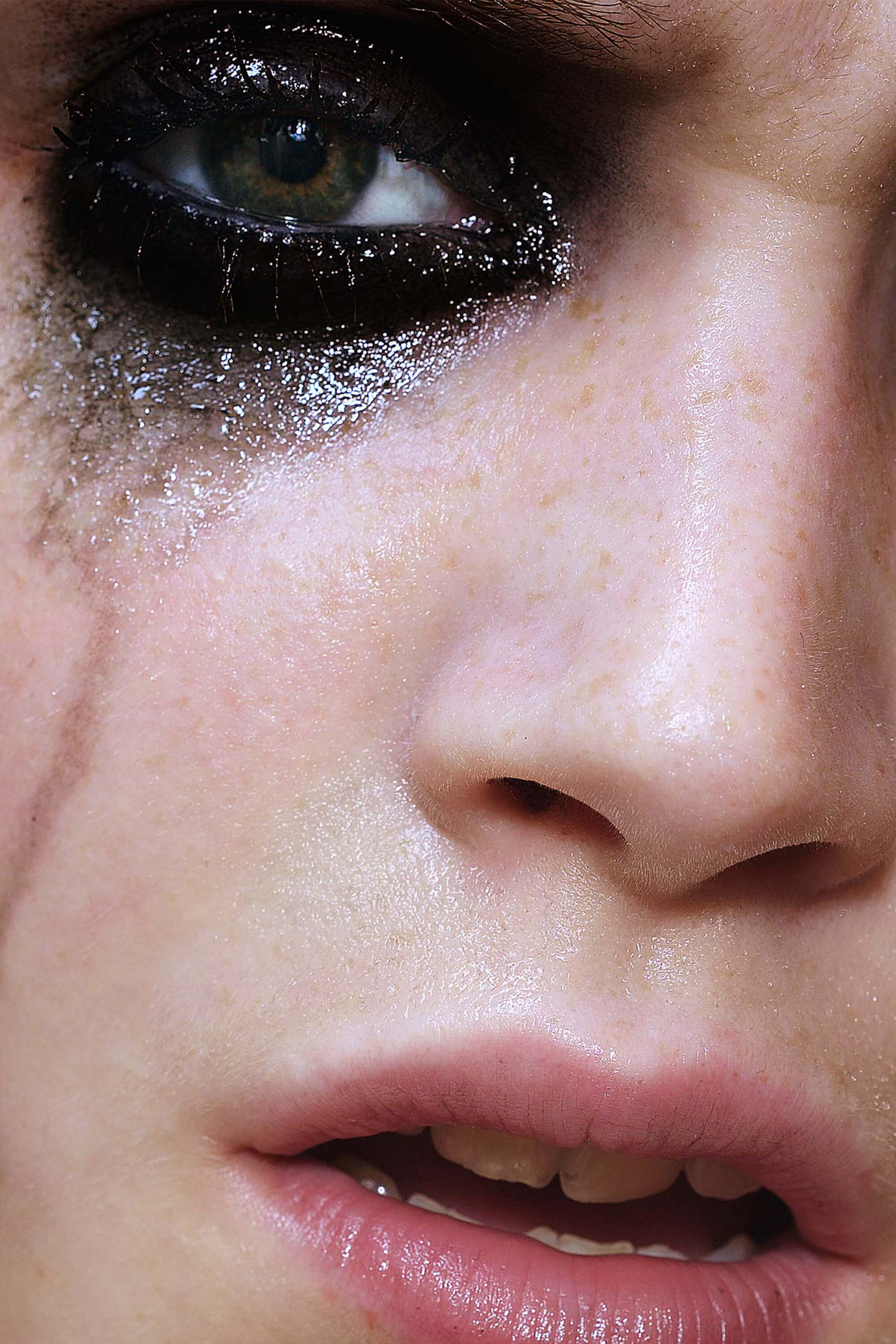This story is part of ‘Debunking the dream’, a series based on an exclusive survey of over 600 fashion professionals, which sought to answer two key questions: what does it take to reach a certain level of success in fashion, and what does it take to stay happy at that level? Read part one, which summarises the findings; part two on how a person’s background impacts their success; and part three on the lifestyle that a successful career in fashion demands.
During the pandemic, a former fashion journalist decided to retrain as a software engineer. Working in fashion was knocking her confidence and triggering her anxiety, she says. After seven years of living in a “depressed and anxious state”, she was burnt out.
“Since leaving fashion, I’ve been able to find and follow obsessions that feel completely personal to me and develop my own perspective rather than be dominated by trends or afraid of being seen as irrelevant. In fashion, I was commercialising my interests, turning everything I enjoyed into a monetisable opportunity, which didn’t work for me,” says the former reporter, who asked to remain anonymous. Her new job gives her stability and financial security, and — crucially — is separate from her sense of self, something she said she couldn’t achieve while working in fashion.
As overproduction pushes the fashion industry into overdrive and the global economic downturn squeezes teams, the gap between employees’ expectations and reality is growing, and many depict a pattern of disillusionment and unsustainable pressure. The Vogue Business ‘Success in Fashion’ survey sought to answer two key questions: what does it take to reach a certain level of success in fashion, and what does it take to stay happy at that level? The responses revealed three main factors that make a person more susceptible to burnout: the way your identity intersects with the pressures you experience at work, the sense of purpose or impact you derive from your job, and the way you structure your time and lifestyle around your work. The years since the onset of the pandemic have only heightened burnout rates, as calls for fashion to maintain a more realistic pace have fallen to the wayside, and the fashion calendar has resumed in full force.
An exclusive Vogue Business survey of more than 600 fashion professionals reveals that systemic discrimination, unsustainable lifestyles and a widespread burnout culture are spurring dissatisfaction. Without real change, the industry risks a mass talent exodus.

There is a difference between being run-down and being burnt out, although the two often get conflated, says Subira Jones, founder of consultancy The Fireproof Career. “You get run-down when you’re exposed to acute stress with a defined end-point. You just need to rest, recharge and reset,” she explains. “Burnout is the chronic exposure to stress over a longer period. No matter how long you try to recharge, you often can’t switch back on or perform at your optimum. Success is not sustainable in burnout, and it comes at a detrimental cost to your physical and mental health.”
Fashion needs to find a way to address its burnout culture, or it risks alienating talent, capping people’s capacity to deliver, and slowing progress on big-picture agendas such as sustainability and diversity, equity and inclusion (DE&I). But how?
Burnout happens when a lifestyle lacks balance, and this often means work is playing too big a role or adding unnecessary stress. For fashion, this stress is systemic, but there are everyday habits that can slowly form solutions. Adopted on a wider scale, experts say these could slowly bring fashion back from the brink of a mass exodus.
Burnout doesn’t discriminate, but fashion does
People from marginalised backgrounds are more vulnerable to the power dynamics at play in the industry and, therefore, more likely to experience burnout. “Being a Black person working in a high-pressure environment, there’s more demanded of you and [your flaws or errors] are less accommodated than your colleagues’, which leads to a sense of burnout,” says Wangu Chafuwa, changemaker at inclusive workplace consultancy Utopia.
Representation can be an added burden for the individuals who break through first. “The pressure is that I’m not meeting people’s expectations of what success could be, that I’m not doing well enough to represent people [from my community] that look up to me and show them that you can reach the top while still being yourself,” says plus-size model James Corbin, who is Black and grew up working-class.
The Vogue Business ‘Success in Fashion’ survey reveals an industry obsessed with keeping up appearances, excluding marginalised groups and limiting their progression. The fantasy of fashion — which lures many of these groups in with the promise of belonging — remains elusive.

When you also have a public profile — which is commonly coupled with success in fashion — the pressure grows. “Early on, the bar was low. People didn’t have high expectations for my output because I’m a woman of colour with a squeaky little voice, but now the bar is a lot higher, and there’s a lot of pressure that comes with that,” says Aurora James, founder of fashion label Brother Vellies — which preserves and creates jobs for artisans in the Global South — and non-profit 15 Percent Pledge, created in 2020 to support Black-owned businesses.
Some struggle with feeling tokenised when representing a marginalised group. Gender-fluid designer Fabian Kis-Juhasz started her brand in 2019, around the time when highlighting marginalised identities was becoming more common in fashion media, she observed. “In theory, this sounds nice, but it also sounds like some weird mutually beneficial thing where you get attention and they get something to write about. I think, in a lot of ways, I got to where I did because it seemed like a novel cause. I don’t know if representation in that way really achieves that much,” she says.
For James, knowing that her work is tangible, practical and effective is what stops her from feeling tokenised. “I feel a lot less tokenised now than I used to because there’s a lot more people who look like me in rooms.” That’s a sign that the tokenisation at the time was in service of progress, she continues, when the problems you faced feel less relevant for the next generation.
Should work provide purpose?
One of the factors that exacerbates burnout is the way fashion professionals navigate purpose in their careers. On one hand, people who feel that their work is not contributing to a greater change or something they care deeply about are more likely to feel discontent or seek other job opportunities. On the other, a deep sense of purpose or desire for impact can put pressure on individuals to prioritise work above all, and the pressure that builds can lead to burnout.
Given fashion’s role in influencing culture, personal success is typically measured more by impact than finances or work-life balance. “In other industries, success is based on remuneration, role, leadership or a work-life balance that allows you to have a family or get married,” says Jamie Gill, founder of non-profit The Outsiders Perspective, chair of the British Fashion Council’s diversity committee, and executive director at womenswear brand Roksanda. “In fashion and other creative industries, success is about recognition and impact.”
Employees working in sustainability or DE&I are more susceptible to feeling disillusioned or burning out when they see slow progress in their vision for a better industry. James says she now warns young people against this. “I always tell people we hire at 15 Percent Pledge, you can’t look for your sense of fulfilment in your job. It’s a plus if you can get that, but ultimately, we need to be fulfilled as individual humans because expecting your employer to provide that for you is setting yourself up for failure,” she says.
Purpose-driven roles often require people to be hyper-aware of systemic barriers, heightening the personal barriers they face if they are also marginalised. “Ignorance is bliss. I’m passionate about what I do, so there’s a lot of emotions involved, and it’s hard to feel like you can’t fix everything,” says fashion inclusion consultant Arooj Aftab. “It is exhausting, constantly fighting, explaining and justifying,” says talent scout and founder of Afro Fashion Week Michelle Ngonmo.
For many working in purpose-driven roles, there is also the added cognitive dissonance of working in an under-resourced team in a company whose culture or practices are part of the problem they have been tasked with solving. “You are expected to redirect the same ship that is causing the problems while facing constant closed doors and challenges,” says consultant and founder of talent platform The Now Work Hannah Phang. “Meanwhile, the industry is hurtling further into overproduction and overconsumption, but you’re not allowed to name the elephant in the room.”
For James and Gill, framing DE&I work as a business incentive rather than a personal purpose helps to set a boundary that protects them from some of the pressure. “Nobody’s going to care about anything unless that thing makes money or generates excitement, attention, momentum or return. Finding ways to make the right thing also the most profitable thing is what’s interesting to me,” says James.
The highs and lows of contract work
Like many creative fields, fashion has a high proportion of freelance workers, who often have to grapple with inconsistent pay and precarious contracts.
Utopia’s Chafuwa says there’s a central tension in the fashion industry’s freelance landscape. “The casualisation of the fashion workforce has created a gig economy, which allows people to innovate and be different, so you don’t want to start formalising it in fear of it stifling creativity. At the same time, the casualisation means that there are not enough people that speak up when things go wrong, and people can feel disposable under a system with no accountability.”
Freelancers – who make up 30 per cent of the survey respondents – are constantly forced to advocate for their value and negotiate fees with clients. Some see this as a necessary evil – “it’s either negotiating my pay or explaining to my landlord why I can’t pay rent this month” – while 33 per cent are uncomfortable with this process of negotiating. The lack of transparency between freelancers and clients makes it difficult to know how much to charge or justify prices. Many report feeling pressured to lower prices in order to secure or keep clients. One said negotiating was a particularly fine line in fashion, which they describe as a “word of mouth industry” where being too assertive about pay can mean you’re branded “difficult to work with” and lose out on future opportunities, not just with the client at hand. Even after negotiating, many say they struggle to recoup late payments.
Others say negotiation is part and parcel of being a freelancer and has made them more confident in their skillset and the value they bring. Of the freelancers that took part in the survey, 48 per cent say they are paid somewhat or very fairly, while only 38 per cent of people in full-time roles say the same. Freelancers are also more likely to feel like their work aligns with their values, with 65 per cent responding in this way versus just 50 per cent of people in full-time employment. This is largely because those who know how to negotiate (through experience, privilege, or mentorship) can have more control over which clients and projects they accept.
Fashion’s reliance on freelancers is as much a response to decreasing in-house roles as it is a push for more freedom at work. The downside is that there are fewer entry-level positions where fledgling fashion professionals can build community and learn from veterans, says journalist Aya Noël. This limits newcomers’ ability to gain experience and progress to better-paid and more respected positions. “The old guard remains in control because the responsibility given to newer people in the fashion industry is work that’s not taken seriously,” adds writer and content creator Alexandra Hildreth.
Without an employer dictating their work hours, freelancers can feel like they’re always on and can never switch off. “Especially when you come from nothing like I do, you feel so guilty taking breaks,” says Aftab. This is especially true of social media content creators, who are expected to post continuously. “When you are your business, it’s harder to dissociate,” says influencer Camille Charrière. “When people say no, it feels like you personally are not good enough. The pressure is there all the time; it’s part of the work.”
Curing systemic burnout
Burnout itself is not an occupational phenomenon; it’s actually about lifestyle, says burnout expert Jones. “The key is to build a lifestyle which not only prevents burnout but is conducive to good health and wellbeing. A lot of people who are high-functioning, or naturally resilient — and you have to be resilient in certain industries — believe themselves immune to burnout, but they’re not.” Those from marginalised groups, or people who have experienced trauma, are often desensitised to resistance, which makes them more susceptible to burnout. “A frog that adjusts well to tepid water won’t realise when it’s being boiled alive,” she says.
Fashion is a highly coveted career, but the myth of a glamorous lifestyle often obscures the reality: blurred personal and professional boundaries and a relentless pace.

Jones has developed a five-step burnout prevention and recovery toolkit, which starts with understanding whether you are run-down or burnt out and removing unnecessary stress. The third step is eliminating unnecessary debts and building up a financial safety net. This can alleviate long-term stress and help people feel safe enough to pursue meaningful rest and recharging before taking ownership of their career and lifestyle. Freelancers’ financial precarity not only makes them more susceptible to burnout, it can also make it harder to recover, she says.
If you suspect an employee is heading towards burnout, the worst thing you can do is tell them, says Jones. “They’ll just double down to try and prove you wrong. Instead, implement team-wide training so no one feels singled out.” Essentially, employers need to support workers in understanding their personal needs and respect the boundaries they set. They also have a responsibility to build a culture and infrastructure that prevents it, says Jones. “If you don’t have an inclusive environment, you have a hostile one, and no one thrives in a hostile environment. If a company has the tools there, but their employees aren’t empowered to use those tools and take ownership of their own wellbeing, it doesn’t mean much.”
This content has been made open access. To support Vogue Business journalism and enjoy unlimited access to Member-only reporting and insights, our NFT Tracker, Beauty Trend Tracker and TikTok Trend Tracker, weekly Technology, Beauty and Sustainability Edits and exclusive event invitations, sign up for Membership here.
With data analysis by Amy Betts and Jayne Pickard.
Comments, questions or feedback? Email us at feedback@voguebusiness.com.
To receive the Vogue Business newsletter, sign up here.
